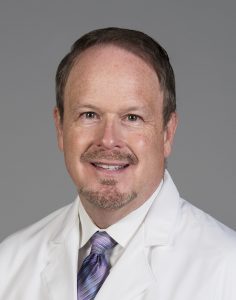The transition of the Summa Health’s emergency department contract generated much discussion in the emergency medicine community. ACEP Now brought you exclusive interviews in January, getting the facts and perspectives from the groups involved—Summa Emergency Associates (SEA), US Acute Care Solutions (USACS), and the Summa Health. Without revisiting the unfortunate consequences of the failed negotiation and the associated challenges and negative impact that transpired, most agree that, for a variety of reasons, the transition was far less than optimal.
Explore This Issue
ACEP Now: Vol 36 – No 10 – October 2017Providing a forum for the discussion of important issues in emergency medicine, ACEP Now has kept its collective finger on the pulse of this situation and will update our readership with timely and relevant information as we receive it. Below is a continuation of our discussion on this very important topic. There has been a leadership change in Summa Health’s department of emergency medicine aimed at rebuilding the department’s reputation internally and with the community, and, perhaps most importantly, the reputation of the emergency medicine residency training program.
ACEP Now’s Medical Editor in Chief Kevin Klauer, DO, EJD, FACEP, recently sat down with David Seaberg, MD, CPE, FACEP, chairman of the department of emergency medicine at Summa Health in Akron, Ohio, and executive vice president of academic emergency departments for USACS in Canton, Ohio, to discuss the future of Summa Health’s emergency medicine program. Here are some highlights from their conversation, edited for length and clarity.
KK: Tell us about your background and experience.
DS: I was originally chair of the University of Florida in 2000. I left to be the inaugural dean of the University of Tennessee College of Medicine in Chattanooga, and then we started a department and residency the next year. I stepped down as dean in 2015 and continued as chair until I left for Summa on July 31, 2017. Also during that time, I was a senior vice president for the Erlanger Health System in charge of physician integration for three years. Formerly, I served as President of ACEP from 2011 to 2012.
KK: Compared to the other five programs you’ve started, how does this challenge stack up to the others? Do you think this will be relatively light work for a guy with your pedigree or is this the challenge of a lifetime?
DS: I think it’s definitely going to be challenging. Starting a residency program is always difficult. There’s still some sensitivity in the community about emergency medicine and currently the institution is on probation. I think there will be some certain challenges to get over some of the stigma from closing a program. There will certainly be some challenges in recruiting here, but I’m confident that with my experience of doing this and my ability, I hope to attract good faculty here. With the supportive environment at Summa Health and within USACS, I think this is very doable. Our goal is to get our program information form done by this next summer so we can be in the match for July 2019.
KK: Does the Accreditation Council for Graduate Medical Education and the Residency Review Committee know that this is in the works?
DS: I don’t know if they know or not. We do have to wait for our institutional survey report, which will come out in October. Certainly, the timeline could get delayed if there are some restrictions put in there, but again, I’ve been in this business for 30 years, and with my experience, I can tell you there is an extremely supportive environment at Summa Health. I think it’s as good as any environment that I helped start.
KK: What do you think the biggest challenges will be and the biggest opportunities?
DS: I think first, Kevin, we need to restore and enhance the reputation of Summa Emergency Medicine and improve the care for our patients. I’m looking at it from three areas.
Pages: 1 2 3 | Single Page






No Responses to “A Fresh Start at Summa’s Emergency Department”